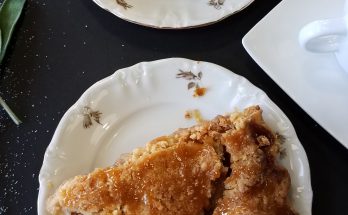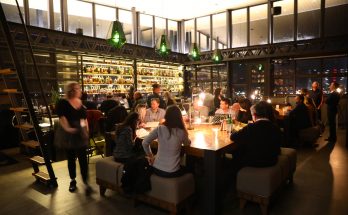From looking like “hell with the lid off” to being touted one of the 20 must-see destinations in the world by National Geographic Traveler, Pittsburgh has come a long way in the past century. Its reinvention is the municipal equivalent of a Cinderella story. And it illustrates the deep, often ignored connection, between art and industry.
It’s hard to believe that darkness used to descend here by 2 p.m. — the smoke produced by factories was that thick. Today, no haze obscures the beauty of the three rivers that flow through the city or the majestic cliffs of Mount Washington, which overlooks downtown. Walking tours through former factory slums highlight ethnic enclaves that have developed considerable cultural and culinary delights. And sports arenas rub shoulders with science museums, each commanding enthusiastic audiences.
As is common in industrial towns, the labor of immigrants and blue collar workers created the riches that magnates like Andrew Carnegie and Henry Clay Frick enjoyed. But Pittsburgh’s wealthy weren’t content to sit on their laurels. It can be argued that they invented corporate philanthropy, investing millions of dollars to build museums and libraries, colleges and churches. Carnegie, in particular, believed that given the choice, man would always seek to improve himself. So he and his peers provided the rough tools Pittsburgh’s citizens needed to learn, experience and grow.
As a result, there is a no-nonsense approach to art here. There’s nothing precious about it. Perhaps that’s why the city’s most famous artist, Andy Warhol, found such delight in featuring supermarket items, tabloid images and everyday people in his work.
The Andy Warhol Museum is one of the Carnegie Museums of Pittsburgh, along with the Carnegie Museum of Art, the Carnegie Museum of Natural History and the Carnegie Science Center. His inclusion is another sign of how forward-thinking the city’s leadership is; Warhol’s silkscreens are accorded the same respect as Greco-Roman ruins and Renaissance paintings; artifacts from ancient cultures; and interactive science experiments.
Competitive with Carnegie to the end, Henry Clay Frick has his own museum of art, the Frick Collection. The art galleries feature European paintings, sculpture and decorative art. There’s also a house museum and a former stable, which now contains a collection of rare horse buggies and early automobiles.
Another can’t-miss museum is the Mattress Factory, which invites artists to create space-specific installations. Exhibits rotate all the time, but there are some permanent spaces, including a claustrophobic “dots” room created by Yayoi Kusama, optical illusions designed by James Turrell and a stunning warped-floor aperture created by Sarah Oppenheimer that allows visitors to peer into a neighboring yard.
It’s telling that the city’s most famous food was created for truck drivers on the go. The Primanti Bros. sandwich is quite a meal on wheels, although anyone who can eat it with one hand deserves a standing ovation. Contents include meat, cheese, coleslaw, tomato and fried potatoes. Although there are many locations you can find one now, the original restaurant is located in The Strip district.
The Strip once housed 12,000 factory workers from Ireland, Poland, Germany and Italy. Today, there are only 400 full-time residents, but ethnic eats abound. There’s Larry Labad, the “King of Hummus” who creates authentic Syrian cuisine at his eponymous eatery. Across the street, Parma Sausage has cured meats Italian-style for more than 57 years. At any given time, they have 3,000 prosciutto hanging upstairs.
Wholey’s Fish Market, another family operation, is a short walk from Parma. It’s a popular lunch spot that also happens to sell live and fresh fish. If you’re a bread lover, good luck walking by Mancini’s Bread. If the window displays of bread sculptures don’t get you, the smell of freshly baked loaves will. Inside, the biggest seller is the pepperoni roll, which looks small but contains a pound of dough and 21 pepperonis each. On game days, they sell more than 1,000.
S&D Polish Deli not only offers treats from the old country, it has a general store filled with Polish chocolates and other food items that immigrants might miss. For dessert, head to Enrico’s Bakery, known for its biscotti.
Burgh Bits and Bites offers walking food tours of the Strip, as well as other Pittsburgh neighborhoods like Little Italy in Bloomfield, Mount Washington, Lower Lawrenceville and Brookline. The tours last up to 2.5 hours and cost $35. Don’t eat before embarking, let tour guides know if you have any food allergies and be sure to reserve your place well in advance, because they do sell out. You won’t go home hungry or disappointed.
Before you leave the city, ascend to Mount Washington at least once. There are two inclines that used to transport mill, mine and factory workers, the Duquesne and the Monongahela. The Duquesne Incline is closest to downtown hotels and, at its peak, there is a small history museum that features pictures from when Pittsburgh did belch smoke and smelt on a regular basis. USA Today ranked it one of the Top 10 sites in the world for viewing a cityscape and, by day or night, the view is spectacular. The cost is minimal ($4.50 for adult round trip, $2.20 for children and free for local university students, those under age 5 or older than 65). The neighborhood is a fun one to explore.
You could spend several days exploring the attractions mentioned above, but you’d still be missing much of what the city has to offer. There are bike trails that stretch out into the countryside, park-like college campuses, vibrant performing arts organizations, one-of-a-kind shopping districts, sporting events and some of the most eco-friendly buildings in the world, like the Phipps Conservatory’s Center for Sustainable Landscapes, which will exceed LEED Platinum standards when it opens this spring. Constructed to mimic the energy efficiency of a flower, the botanical garden’s center will offset all its energy and water needs with self-generated or reused resources. This aptitude for forward-thinking and eco-friendly innovation is why President Obama selected Phipps Conservatory to host a G20 dinner in 2009.
For more information on things to do and see in the Steel City, go to VisitPittsburgh.com.



